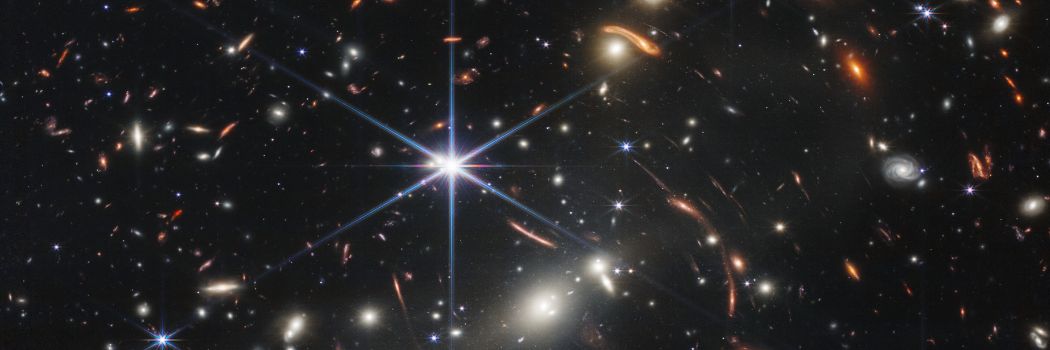
The James Webb Space Telescope (JWST) – which Durham helped to develop and engineer – has captured its first images.
The JWST is NASA's replacement for the Hubble Space Telescope and is the largest, most powerful space telescope ever built.
Its first image – seen at the top of this page – is the deepest and sharpest infrared image of the distant universe to date.
Known as Webb's First Deep Field, this image of galaxy cluster SMACS 0723 is overflowing with detail.
Thousands of galaxies – including the faintest objects ever observed in the infrared – have appeared in Webb's view for the first time. This slice of the vast universe is approximately the size of a grain of sand held at arm's length by someone on the ground.
Dark matter
Durham's scientists will be among the first to observe the cosmos using the JWST as they hunt for dark matter and investigate early galaxy formation.
We're part of the global COSMOS-Web programme, which will survey a patch of sky near the constellation Sextans. Thanks to the JWST's increased resolution, our astronomers expect to see half-a-million distant galaxies.
Together with researchers at NASA's Jet Propulsion Laboratory, we will lead work to map the scaffolding of dark matter that surrounds these galaxies and has shaped their evolution.
Galaxy formation
Our Institute for Computational Cosmology has worked on predictions, based on cosmological theory, for what the JWST should expect to see. Due to the time it takes light to travel across vast distances, the further away objects are in the universe, the further back in time they are being observed. Current research is looking to predict what the ancestors of galaxies like the Milky Way would look like in their infancy.
And an international team involving Durham will combine the telescope's high resolution with gravitational lensing – using the gravitational effect of a foreground galaxy to magnify those further away – to look at one of the most distant known galaxies called MACS0647-JD.
Hubble spotted this galaxy forming stars at an astonishingly fast rate, very early in the life of the universe.
At a time when almost everything in the universe was dark matter or hydrogen, these stars "manufactured" the first heavy elements like carbon, nitrogen and oxygen.
We'll be studying these elements to understand the early phases of galaxy formation at the beginning of the universe and how its stars produced these first heavy elements.
Black holes
Our Centre for Extragalactic Astronomy has been involved in the telescope's scientific development, including the Mid-Infrared Instrument (MIRI), which will probe galaxies and black holes.
The centres of many distant and some nearby galaxies, are hidden behind large amounts of dust. At the infrared wavelengths accessible to the JWST it will be possible to "see through" this dust to study enshrouded black holes and get a better understanding of their role in galaxy formation.
And our Centre for Advanced Instrumentation has also made some of the optics for the JWST's Near Infrared Spectrograph's (NIRSpec) Integral Field Unit instrument.






